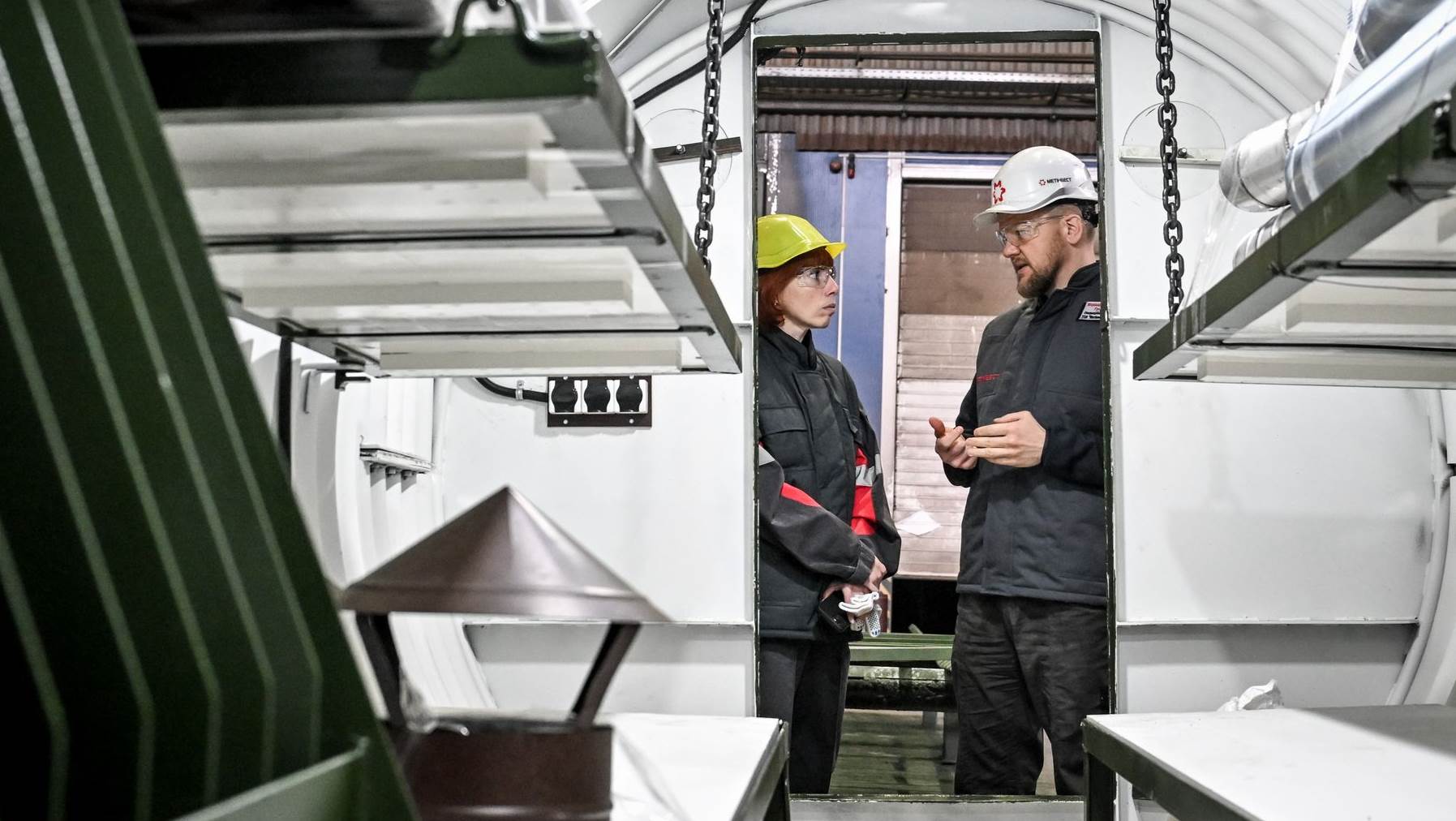Ukraine is the first country in the world to deploy an advanced surgical unit underground, and it has already saved numerous soldiers’ lives. Doctors refer to this 500-square-metre underground medical hospital as the “underground” (a nod to the English word meaning clandestine or something that contradicts the established codes of society). Everything here is truly not what everyone is used to. The hospital is six metres beneath the ground, fully autonomous and as concealed as possible for security reasons.
Roman Kuziv, commander of the “East” medical forces group of Ukraine’s armed forces, initiated its creation. Ukrinform correspondents spoke to him en route to this unique medical facility. For security reasons, nothing is disclosed that could reveal its location.
Medical “underground” as know-how
Roman said: “Some told me that I might be crazy. But once they saw the effectiveness of such facilities, they devised plans to deploy two more in other areas. This is our trademark. We are the first in the world to move an advanced surgical unit underground. There is experience in Israel, which located a hospital underground, but that involved ready-made infrastructure. This is correct, but our task is different: we must provide assistance near the line of contact, we need to adapt to the conditions.”
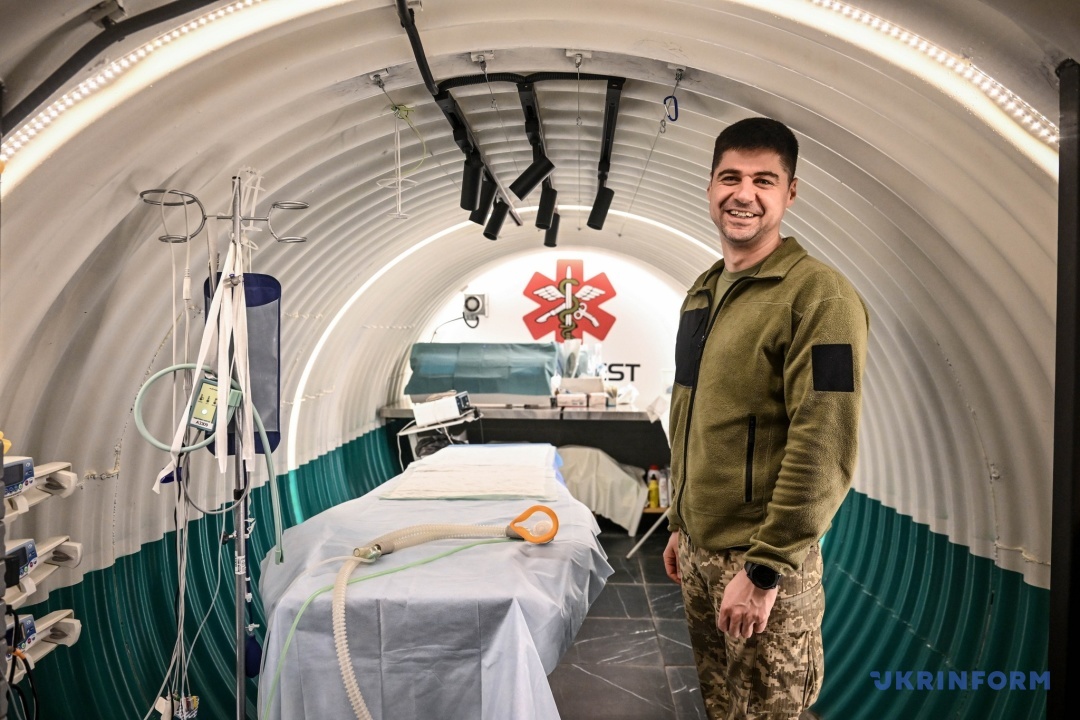
Roman noted that the underground advanced surgical unit is a prototype of a large city emergency hospital performing tasks in an area of active hostilities. The surgical team is capable of providing a very wide range of emergency surgical medical care. If necessary, specialist doctors such as neurosurgeons will be brought in.
He explained: “Why was the decision made to go underground? We cannot stop a surgery, for example, during shelling. At the same time, medics cannot protect themselves, and the enemy does not comply with the Geneva Conventions. The enemy shelled one of our points in this area 16 times. That is why the decision was made to move underground.”
Roman saw a model of a similar underground facility at the front line: a small command post headquarters. That is when he thought: if a headquarters can exist underground, why not an operating or a treatment room as well?
Testing with mines and TNT charges
The underground hospital — like the command post mentioned above — was built by Metinvest specialists at non-industrial sites specially arranged by the Group outside its main production facilities. Before heading to the hospital, we visited the place where it had been created.
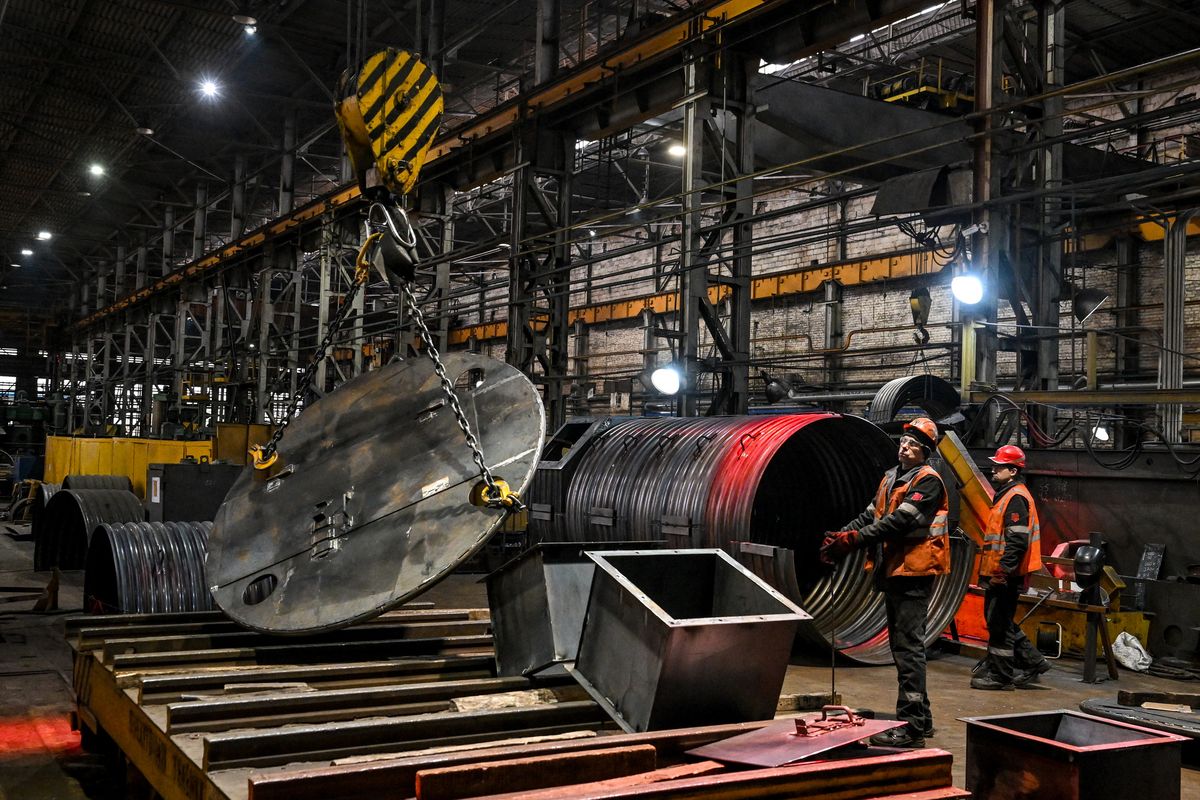
Oleksandr Myronenko, the Group’s chief operating officer, said that the request from medics came some time ago.
He noted: “‘These are old Soviet designs that we have improved. This is our know-how. The need for hospitals is measured in dozens. There is a need to dig in, and the deeper, the safer, given the means of destruction used by the enemy.”
Oleksandr explained that after speaking with military medics, the idea emerged to create a special structure designed exclusively for medical purposes. The project was developed together with medical forces. The basis was the “barrel” or “hideout” — the name given to the structures that make up a hospital — with the appropriate infrastructure. The first, and so far the only, operational model was launched in early August 2024.
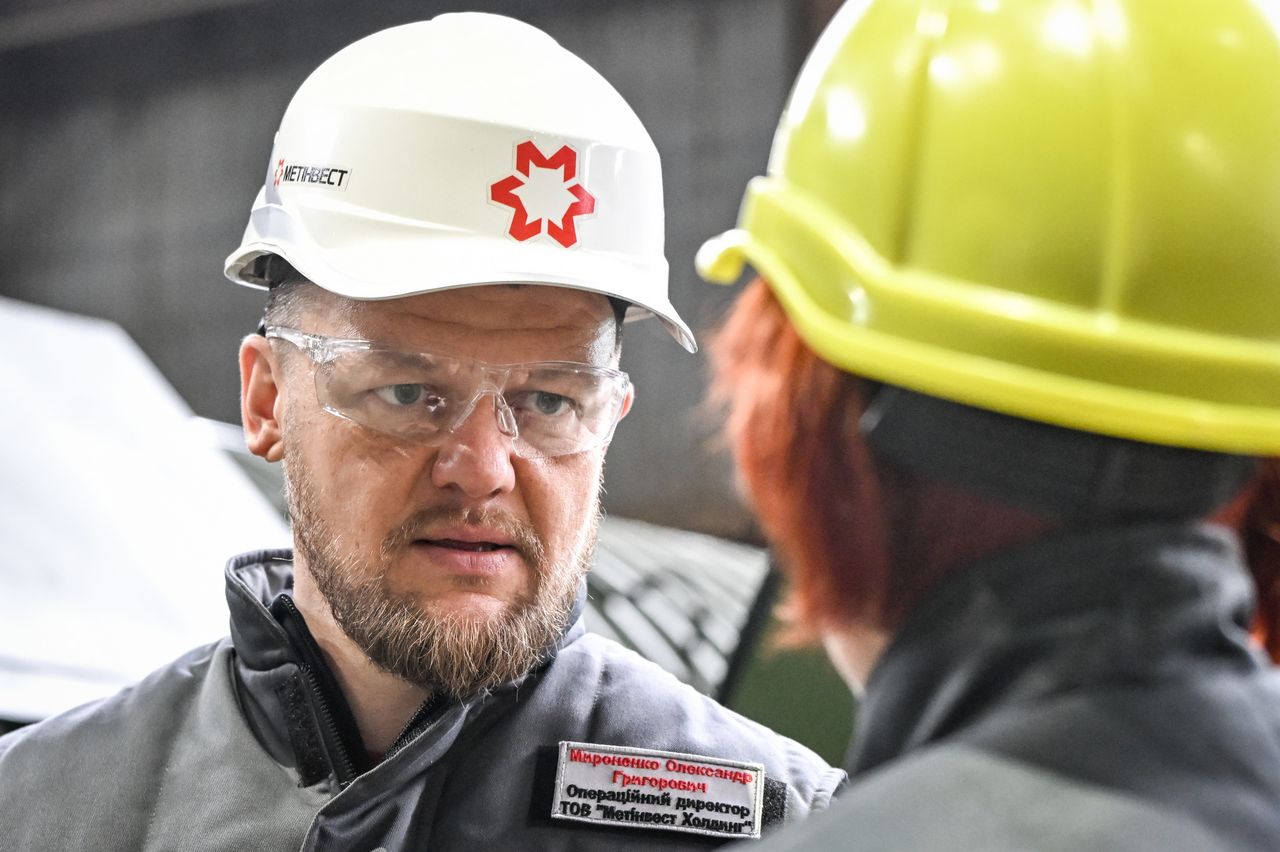
As mentioned, the hospital is six metres deep, and it is carefully covered with several layers of timber and soil. Inside, it has a laboratory, a separate generator room, a sewerage system and an independent well. It is a fully autonomous hospital.
Oleksandr, who oversees Metinvest’s own steel production as part of Rinat Akhmetov’s Steel Front military initiative, explained: “The Group invested UAH20 million in the hospital, including UAH7 million for medical equipment and UAH13 million for “barrels”, interior fit-out, timber and construction work. We carried out land work, timber installation, well drilling and the construction of a generator facility. We have now agreed a plan with the medical forces and hope to open a second hospital in one area in May and a third in June. They will be of a slightly different format. In agreement with the medical forces, we have introduced some structural modifications. They will be smaller — 250 square metres — and more compact. It is also a solid structure that will provide both safety for doctors and extensive opportunities for treating the wounded. The hospitals cost between UAH12 million and UAH15 million each.”
The engineers involved in the project development said that during the certification process, a series of tests proved that the structure could withstand a 120-mm mine, an 80-mm mortar and an anti-tank mine. In addition, three explosive charges — each containing 8 kilogrammes of TNT — were dropped on it from a drone.
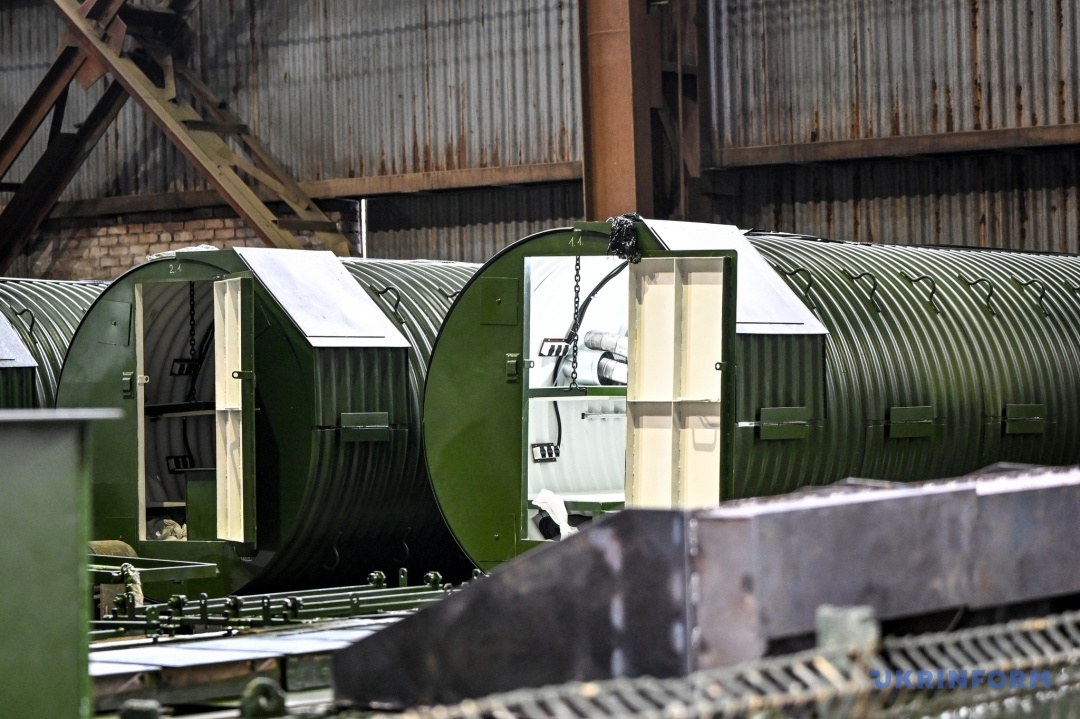
The Group stated: “There is no damage inside.”
Oleksandr said that he was impressed when he heard how many soldiers’ lives have already been saved thanks to the conditions created for the full-fledged, high-quality work of medics. He noted: “The toll runs into the thousands.”
The Group is also producing steel dugouts where soldiers can rest or hide from shelling. We saw with our own eyes how these “barrel dugouts” and the “barrels” — which will soon become parts of underground hospitals — are being made.
The “hideouts” are first literally rolled from steel and then assembled like a giant construction set. Everything in the steel shelter is thought out to the smallest detail: the number of sockets and their placement, lighting, emergency exits, the width of a shelf and height of the chain that holds it.
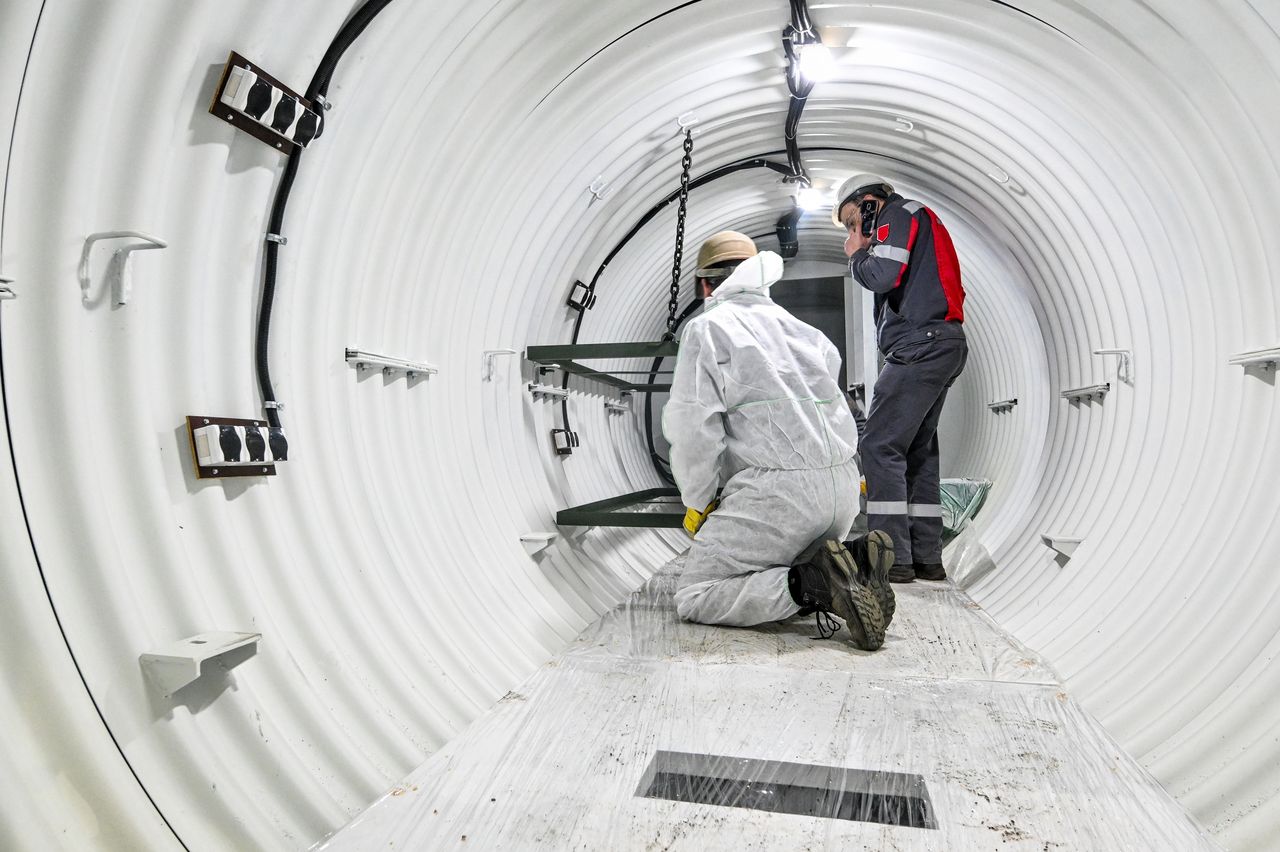
“Medical javelin” and who is in charge of the underground hospital
Roman Kuziv noted that thanks to the efforts of the Group’s representatives and the involvement of medical forces specialists, the hospital’s configuration has been modified around ten times.
He said: “Personally, I wanted vehicles — the ambulance itself — to be able to drive in. But later I realised it was my mistake. Because it meant visibility. Now, I am critical of that decision.”
Meanwhile, we have arrived at the spot and are descending through a special corridor that has just been acknowledged as a “mistake”. And here before us is the field “reception” unit, where patients are triaged as “red”, “orange” or “green” depending on the severity of their injuries.
Roman said: “Anything you can think of in your head is definitely here. It is extremely difficult to surprise our doctors. But, as they say, practice is a form of noble slavery. A military medic does not work eight hours a day: they live in it. And the most important thing is not to develop a God complex: you must not think that you can do everything. There must always be someone nearby to ‘adjust the crown’.”
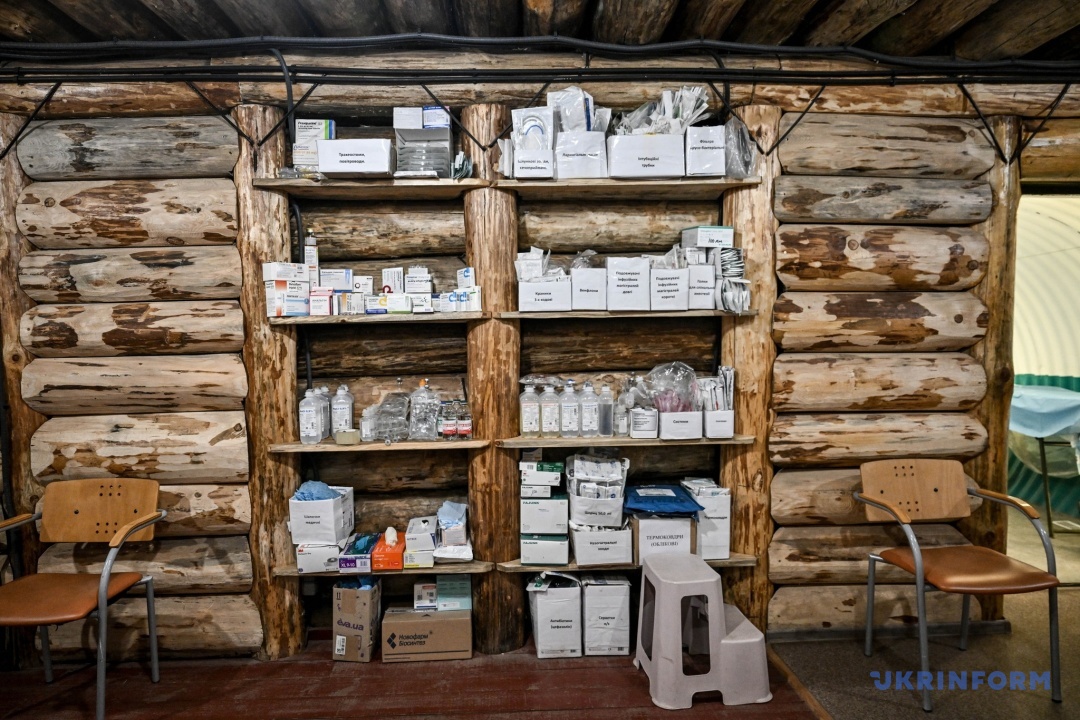
He did not give prior notice of our visit, so no guests were expected.
The surgeon, anaesthetist, operating nurses, orderlies and drivers were all busy with their own tasks. They are not allowed to surface to avoid being spotted by enemy “birds”.
After greeting the surgical department staff, Roman takes us on a short tour. We begin with the operating theatres.
He noted: “The hospital is equipped with everything necessary, it is the benchmark. Everything that can be done in a city hospital in terms of emergency surgery can be done here. Its capacity is up to 200 patients a day.”
Instead of operating lamps, the hospital uses furniture-style lamps, but ones that allow the light to be adjusted at various angles to where it is needed.
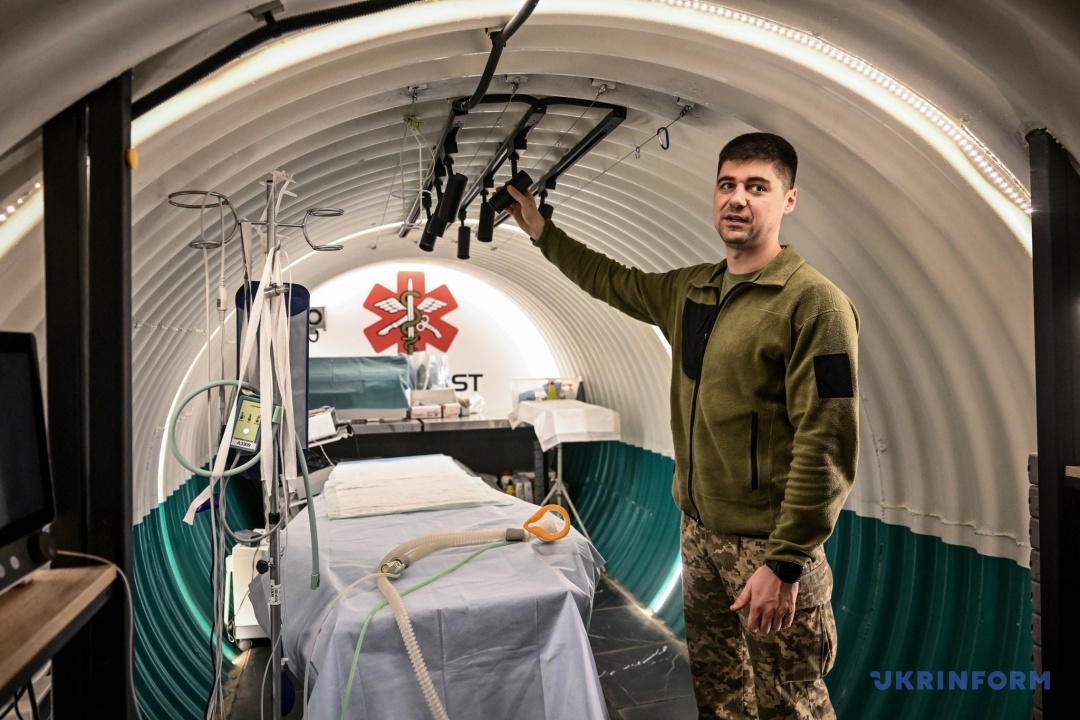
It takes less than half an hour to transport a patient from the front line to the hospital, provided that drones are not interfering. However, currently, FPV drones are responsible for a third of the injuries sustained by soldiers, so it is unwise to count on their absence.
Next comes an anti-shock table and an operating room. The state-of-the-art equipment includes a device that enables doctors to perform surgery anywhere. Medics call it the “medical javelin”.
The hospital has an intensive care unit where severely wounded patients on ventilators are awaiting evacuation. Each room has an emergency exit.
I asked: “Is this safety?”
The commander of the “East” medical forces group explained: “Yes. So that the facility can be exited from any point at any time. Even if they start hitting it with God knows what. If you have ever been underground and covered, you will always want to be able to get out.”
We walk through the staff living quarters, kitchen and recreation area. There are also showers and toilets.

Roman shows the laboratory where initial tests can be performed: blood type, compatibility, haemoglobin, red blood cells and so on. He explained: “This is an underground operating theatre with a small intensive care unit and an admissions department.”
We step into the “green” zone, where the wounded usually wait for evacuation. Nearby, there is a room where people can grab a bite to eat and rest.
I asked: “Who is in charge here?”
Roman said: “The surgeon, though sometimes it is an anaesthesiologist or the trauma specialist. One of the doctors, but usually it is the surgeon. There is also a coordinator responsible for evacuation.”
“Serhiyovych”
During our visit, we meet the head of the surgical department, Oleksandr Holovachenko (his colleagues call him “Serhiyovych”). He is 45 years old and, in civilian life, he works as a paediatric surgeon and has 22 years of experience.
He noted: “It is easier to move from paediatric to adult surgery than the other way around. Children have their own specifics.”
“Serhiyovych” was born in Poland; his father is a serviceman. Later, the family moved to Ukraine, where Oleksandr studied and later worked. He has three daughters. He joined the army through mobilisation, though he was drafted on the third occasion: the first two times he was turned away as soon as they found out he was a paediatric surgeon.
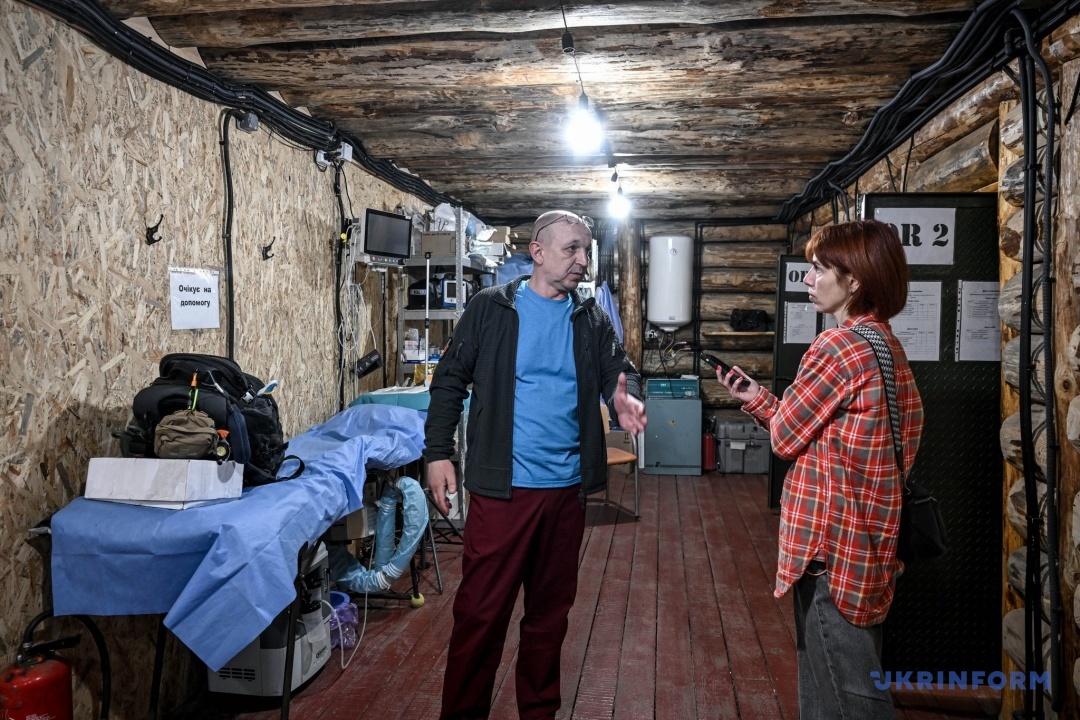
He said: “The entire hospital is our workplace. Everything here is set up the way it should be. Every table... has seen severely injured patients. There were times when all of us had to work simultaneously because of the sheer number of wounded. Some were brought in with carotid artery injury. With that kind of injury, a person loses blood quickly... we managed to save them.” He added that here, underground, they have everything they need to provide urgent first aid.
The medic emphasised: “At war, we have seen things that we would never encounter in civilian medicine. More than that, we have to make decisions here and now. It is experience. We always try to follow up on the fate of critical patients. It is important, and we need to know if we did everything right. I know one of my patients. It turned out that he was seen by a colleague I had worked with for many years before the war.”
I asked: “Are you tired?”
He said: “I am used to it now, but I really miss my hospital. I was at home on leave and visited my colleagues. They are waiting for me. And I miss my family very much.”
Those without whom surgeries cannot begin
Anaesthesiologist Maksym Dyachok joined the army in 2023. Before that, he worked at the central district hospital. He says that some regional hospitals would envy what they have here, just a few kilometres from the front.
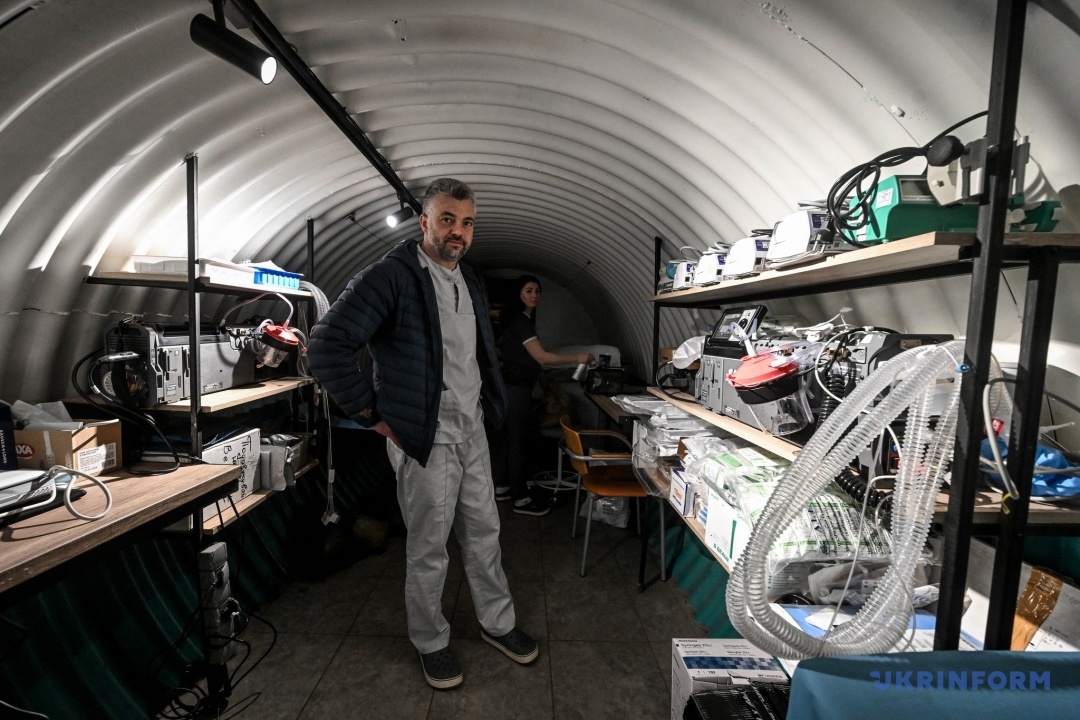
Maksym said: “My presence as an anaesthesiologist is required constantly. Out of ten cases, I am definitely needed in at least two. The hardest part is the mass arrival of wounded. We know what to do and work on autopilot; anyone can team up with anyone else. This is called teamwork.”
38-year-old Snizhana works as a nurse and anaesthesiologist assistant. She proudly emphasises that surgeons cannot begin their work without them.
She could have worked in civilian medicine, but at some point, felt that she was capable of more and wanted to provide assistance where it was much more needed.
Snizhana recalled: “When I was leaving, I did not understand where I was going or what I would be doing here. I felt afraid: would I be able to keep up? Because this is not a civilian hospital where everything goes according to plan: here, you can expect anything. I remember when the first seriously wounded patient arrived. Afterwards, I spent a long time analysing my actions, thinking about where I could speed up.”
She has a 16-year-old son at home, whom she is raising on her own. While the woman helps to save wounded soldiers, her mother takes care of her son.
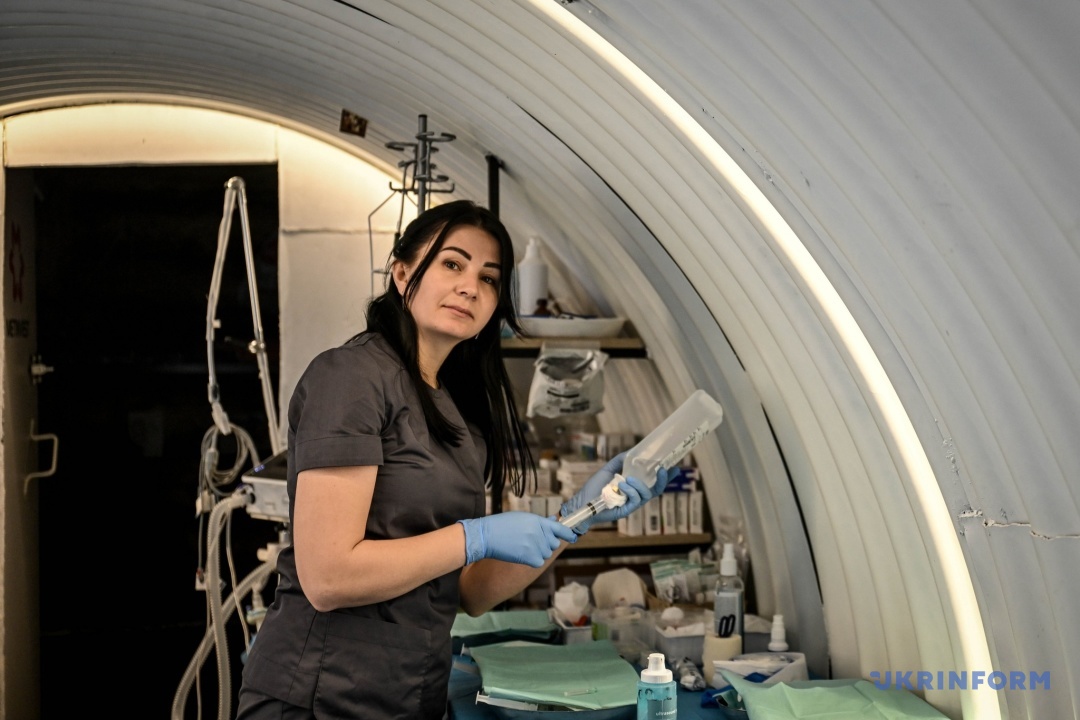
Snizhana, barely holding back tears, said: “When I came home on leave, I told him that I was ready to stay, if necessary, because medics are needed in the rear as well. My son has become more independent during the war, more mature, and he said: ‘Go, I will wait for you here.’ I call him every morning to wake him up instead of the alarm clock and he calls me when his classes are over.”
On 4 May, she will have been in the army for two years. Before the underground hospital was establishes, she and her colleagues performed surgeries in ordinary village houses abandoned by people.
She added: “We wore bulletproof vests and helmets... There was the threat of glide bombs, and we were in the ‘operating theatre’. We saw the alerts, but we carried on with our work. We were working in a small house, and I could not imagine that such things were possible... I was shocked. Now we are protected: it is safe for us and for the patients.”
Snizhana admits that she deeply misses her simple everyday life, and that while she is at the front, her civilian life is on hold.
A place that has seen pain
Roman Kuziv, the commander of the “East” medical forces group, is 36 years old. His call sign is “Tenth”. During the full-scale invasion, he has seen his family twice. Does he miss his wife and children? Yes. But for now, there is no other way. He is not a desk-bound commander, and in fact, he does not even have an office as such. He knows every medical point, having personally visited each one.
The commander stated: “The work entrusted to me, I know it like a part of my own body. I am demanding, but I try to remain humane. Evacuations from the front line are the greatest problem right now.”
He does not hide the fact that there have been moments in his life when he felt fear, and he does not believe those who claim they are not afraid of anything.
Roman joked: “I understand that I am responsible for other people, that someone’s life depends on my decisions. I have made a deal with death: I do not provoke it or experiment with it and it does not touch me, until a certain time.”
Like other medics, he refers to the underground hospital as the “underground”. After the war ends, it could be turned into a museum or dismantled completely, but it definitely cannot be a place of entertainment, because it has witnessed so much human suffering.
